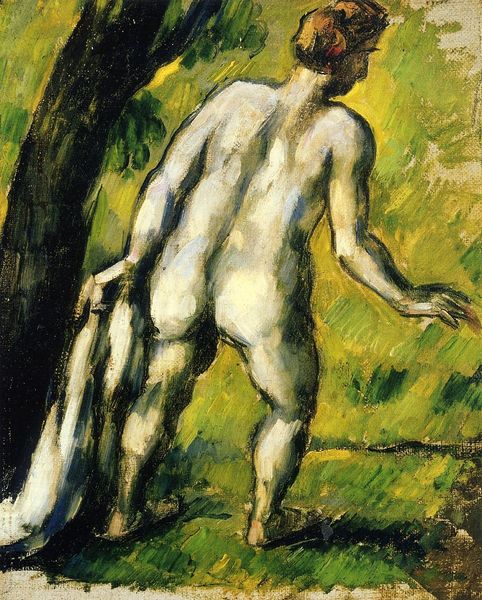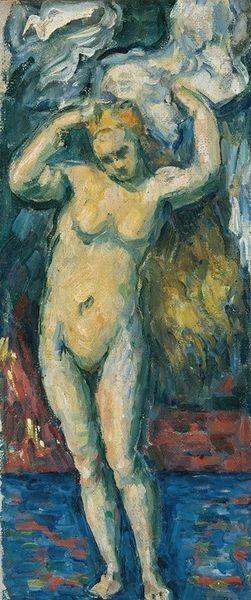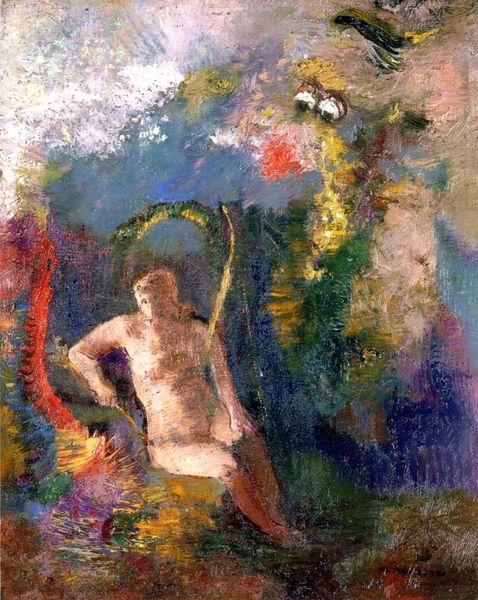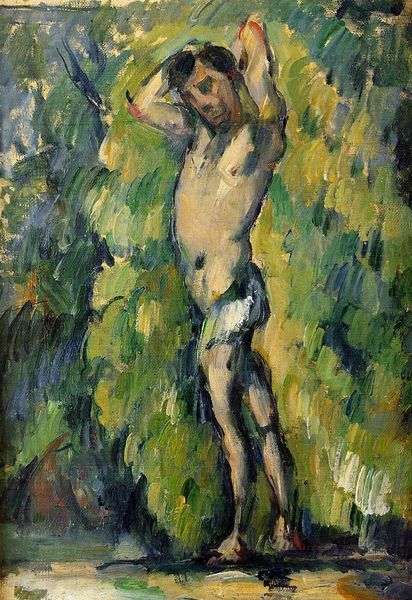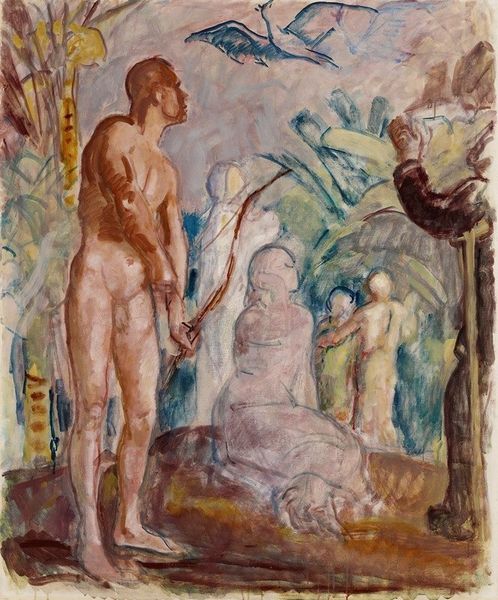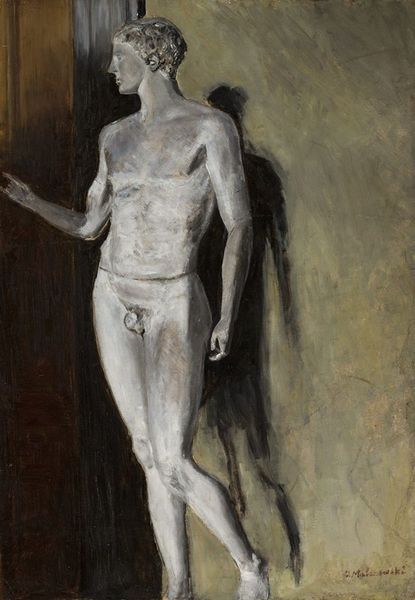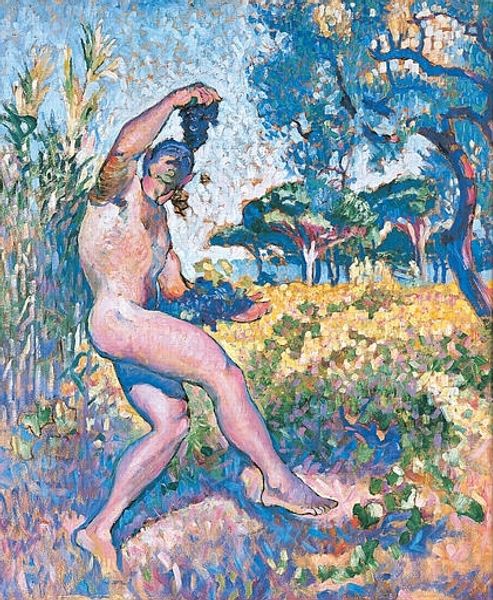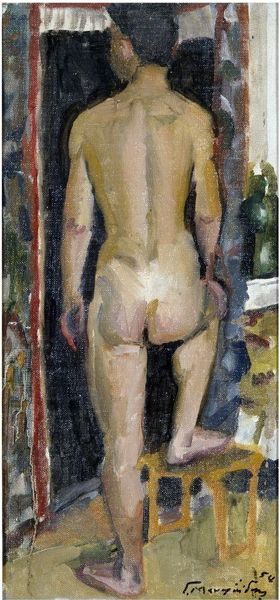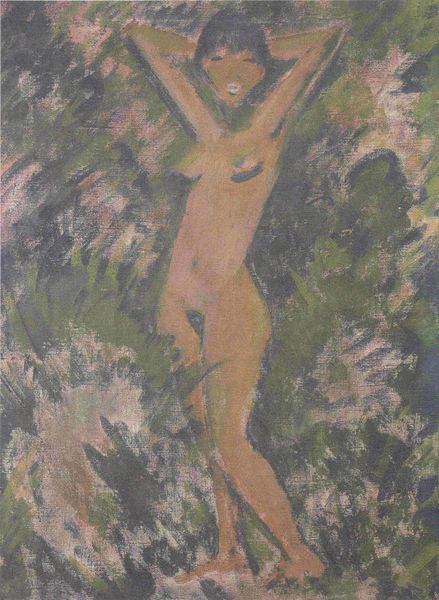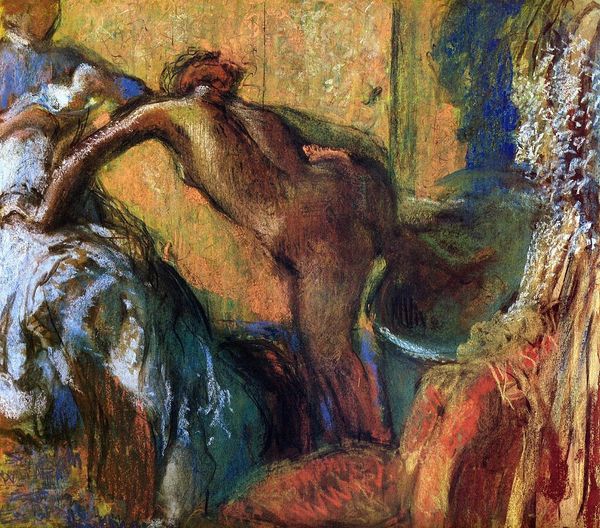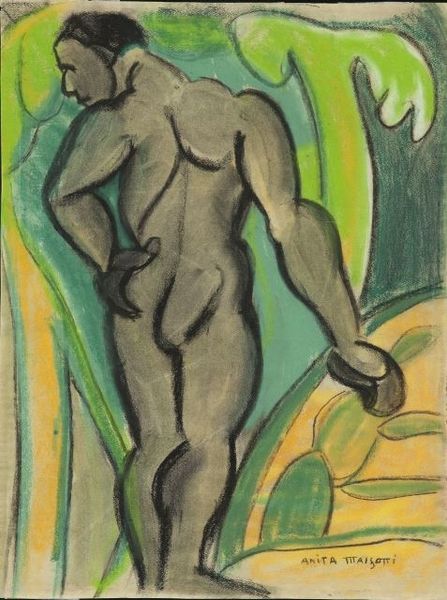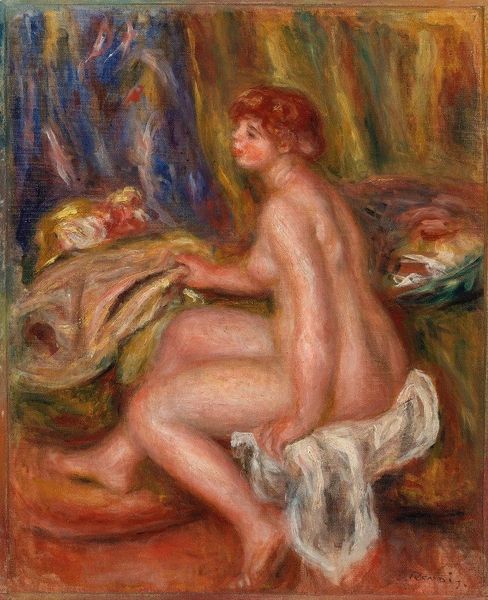
Copyright: Public Domain: Artvee
Editor: We’re looking at Paul Cézanne’s “Standing Bather, Seen from the Back,” an oil painting from 1879. It feels quite serene, and I'm struck by the use of light to define the figure against the landscape. What is your take on this piece? Curator: The composition arrests me. Cézanne’s brushstrokes build the figure and the landscape in equal measure, eschewing traditional notions of depth and perspective. Observe how the colour palette echoes between the figure and the foliage. It almost presents the body as a kind of geological feature in its own right. Editor: It is like the figure and landscape are made from the same substance. The brushstrokes definitely guide the eye everywhere. Is he downplaying the figure’s form? Curator: Indeed. Consider how the figure is rendered with simplified, almost geometric forms. We can see a departure from traditional academic figure drawing, a shift towards abstraction. What is he pursuing? The geometric foundation and spatial ambiguities become key compositional elements rather than mere representation. Editor: So, the emotional element almost doesn’t matter – it's about shapes and colours creating this composition. The ‘what’ is less important than the ‘how’ here. Curator: Precisely. Focus instead on the relationship between form and colour, line and plane, which is more than representational accuracy, giving rise to modern art. The emotionality arises through structure. What appears simple reveals something extraordinary. Editor: I see that the emotional impact stems from these artistic elements you highlighted rather than explicit symbolism or the bather's expression. I will never see Cézanne the same way again. Curator: It is indeed something to behold; hopefully we can view his paintings and think about how we understand and interact with his compositional components.
Comments
No comments
Be the first to comment and join the conversation on the ultimate creative platform.
